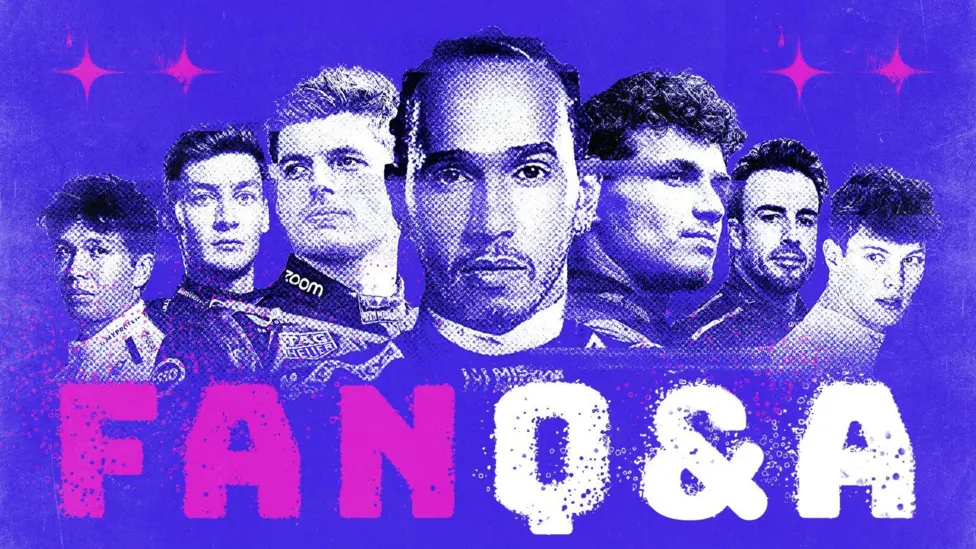
Should Verstappen Have Been Given a Bigger Penalty for Russell Collision?
Spanish Grand Prix Drama Overshadows Piastri’s Stunning Win
Oscar Piastri might have claimed his fifth win of the season with an ice-cold drive in the Spanish Grand Prix, leading home McLaren team-mate Lando Norris in a sensational 1-2 finish. But let’s be honest—nobody was talking about that when the chequered flag fell.
Instead, the paddock chatter, media headlines, and fan fury all revolved around one man: Max Verstappen. And one question loomed larger than any trophy: Should Verstappen have been given a bigger penalty for his collision with George Russell?
The Flashpoint: A Collision That Left Everyone Talking
The moment in question came in the final laps of an already tense and tightly packed race. Verstappen, fighting for position with Russell, had earlier gone off track while defending—an incident in itself that sparked debate. But it was what came after that raised eyebrows. Approaching Turn Five, Verstappen appeared to veer into Russell’s Mercedes in what many described as a “deliberate move.”
Russell himself didn’t mince his words when asked post-race:
“If it was truly deliberate, then absolutely [he should have been black-flagged]. Because you cannot deliberately crash into another driver. We’re putting our lives on the line.”
For those unfamiliar, a black flag is the nuclear option in Formula 1—a disqualification from the race. And while Verstappen didn’t get that, he was slapped with a 10-second penalty and three points on his super licence, leaving him just one infraction away from a race ban.
Was that enough? Many around the paddock—and fans watching from home—thought not.
Why the Penalty Feels Light
In eras past, a move like Verstappen’s could’ve seen a driver suspended. The FIA stewards, who operate independently, handed out what they considered a “relatively severe” penalty, but it felt out of sync compared to recent rulings.
Consider this: Russell got a drive-through penalty for cutting a chicane in Monaco without giving the place back. No contact. No damage. Yet it was deemed more serious than making contact with a rival car during green flag racing?
The stewards offered no direct comparison, and an FIA spokesperson confirmed they wouldn’t comment on individual decisions. That silence only added to the frustration.
Red Bull’s Decision-Making: A Hasty Hand Back?

Should Verstappen have been given a bigger penalty for Russell collision?
The Verstappen-Russell saga actually started a few laps earlier. Battling through Turn One, Russell made a move on the inside and Verstappen ended up taking to the escape road to avoid a collision, rejoining the track ahead.
Fearing a penalty, Red Bull told Verstappen to give the place back to Russell—something they’ve rarely done so quickly in the past. Team principal Christian Horner later admitted they jumped the gun, saying:
“You’re expecting to get a penalty, so that’s why it was, ‘OK, do you know what? We’re going to have to give this place up.’ With hindsight, was it a mistake? Yeah.”
The stewards eventually ruled that Russell had lost control momentarily and was not fully in control at the apex, which under the regulations means he hadn’t fully earned the right to space on corner entry. They also found Verstappen hadn’t deliberately left the track in the earlier skirmish. Translation? Max could have kept the place.
A costly miscalculation, and not the only one.
Tyre Gamble Gone Wrong
Red Bull’s second error came under the safety car, when they chose to pit Verstappen for hard tyres. It was a decision Max questioned angrily on the radio, and Horner later conceded it was the wrong call. In the end, it allowed both McLarens and Ferrari’s Charles Leclerc to leapfrog the Red Bull, leaving Verstappen off the podium in P4.
Between the ill-timed tyre change and the questionable re-handback to Russell, Red Bull made some rare strategic missteps—and Verstappen’s mood darkened accordingly.
Was a Race Ban Ever on the Table?
Plenty of drivers and pundits hinted that had Verstappen’s move happened in a different era, a race ban would have followed.
Given that Verstappen now has 11 penalty points on his licence—just one away from an automatic one-race ban—it’s a real possibility that any further incident in Canada or Austria could sideline him. Those points begin to expire after the Austrian Grand Prix, so the clock is ticking.
Whether the FIA are willing to drop the hammer on F1’s biggest star remains to be seen.
Stroll’s Latest Outburst Raises Eyebrows
Away from the Verstappen drama, another storm was brewing in the Aston Martin garage. Lance Stroll withdrew from the race citing wrist pain linked to his 2023 cycling injury. But the headlines came from his behaviour after qualifying.
Multiple sources reported that Stroll lost his temper, allegedly throwing equipment and swearing at team members. While Aston Martin didn’t deny he was angry, they downplayed the severity. Still, this wasn’t the first time Stroll has reacted emotionally to being outqualified by team-mate Fernando Alonso.
With his form slipping and rumours swirling, some are starting to wonder: is this the beginning of the end for Stroll in F1? Probably not—his father owns the team, after all—but the pressure is mounting.
McLaren and Norris: Fixing the Quali Puzzle
While Piastri continues to impress, questions have been asked about Norris’ qualifying performances in 2025. Last year, Norris had a clear edge; this year, Piastri’s been the sharper of the two.
Norris has spoken openly about a “numb” front-end feeling that’s made him uncomfortable in the car—especially in qualifying. Team boss Andrea Stella confirmed the team have been working on setup changes and potential upgrades to help Norris get more confidence on the limit.
Encouragingly, Norris felt he made a breakthrough in Monaco and backed that up with P2 in Spain. It could just be a turning point.
Ferrari and Hamilton: What Went Wrong?
And finally, to Ferrari. There was confusion when Lewis Hamilton was left out for an extended stint before his second stop, allowing Russell to undercut him and leapfrog by ten seconds. But as many noted, tyre strategy in Spain often involves offsetting—sacrificing track position to attack later.
What truly puzzled fans was Hamilton’s post-race mood. Visibly dejected, he called it his “worst race, balance-wise” and admitted he had no clue what went wrong.
Ferrari boss Fred Vasseur later revealed Hamilton suffered an unspecified issue late in the race. But even before that, Hamilton was off the pace of team-mate Charles Leclerc—losing around ten seconds over a single stint. Not disastrous, but far from what we expect from the seven-time champ.
A Grand Prix That Raised More Questions Than It Answered
In the end, the Spanish Grand Prix may have been won by Oscar Piastri, but it will be remembered for controversy, confusion, and confrontation.
Should Max Verstappen have been given a bigger penalty?
That’s a question still echoing around the paddock—and the grandstands.
In a sport where milliseconds matter and tempers run hot, incidents like these expose just how fine the line is between hard racing and foul play. Whether the FIA missed an opportunity to set a precedent is a debate that will rage on until Montreal—and possibly beyond.




































There are no comments yet. Be the first to comment!